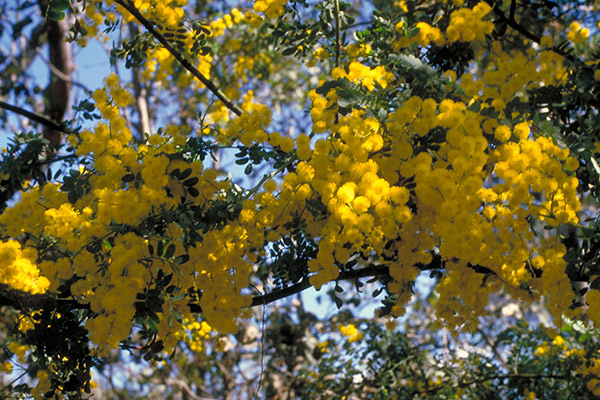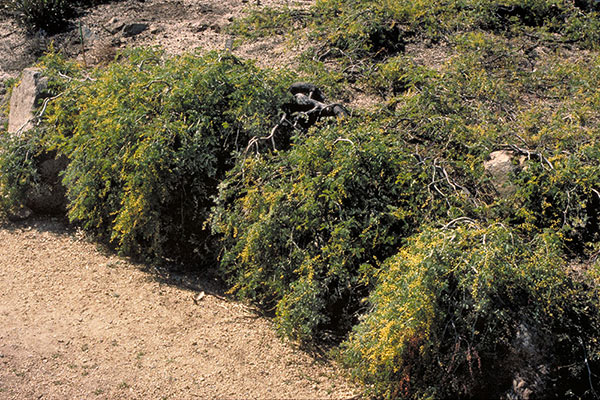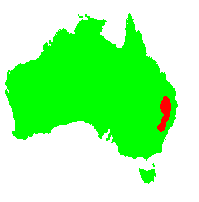General Description:
Acacia spectabilis is one of the most popular wattles in cultivation. It is usually a small tree or large shrub up to 6 metres in height with bright-green, “feathery” foliage and prolific, golden-yellow flowers. A cascading or prostrate form of unknown origin is in cultivation. Mudgee wattle is one of those species which retain the fern-like, bipinnate foliage throughout their lives (in most other species, the bipinnate foliage is replaced by flattened stems called phyllodes). Despite the common name, the species occurs over a wide area west of the Great Dividing Range.
The flower clusters are globular in shape and are produced in long racemes and provide a spectacular display in late winter and spring. The flowers are followed by long, wide seed pods about 50-100 mm long.
A.spectabilis is easily grown in most temperate areas. It accepts a range of soils provided drainage is reasonable and it is tolerant of at least moderate frost. It flowers best in full sun or dappled shade. Mudgee wattle is quick growing and will often flower in its second or third year.
Propagation is relatively easy by normal seed raising methods following pretreatment by soaking in boiling water or by scarification. Cuttings may be successful but this method is not often used. Propagation of the prostrate form would need to be carried out from cuttings in order to retain the prostrate habit.

Acacia spectabilis
Photo: Brian Walters

Acacia spectabilis prostrate form
Photo: Brian Walters
 Australian Native Plants Society (Australia)
Australian Native Plants Society (Australia)